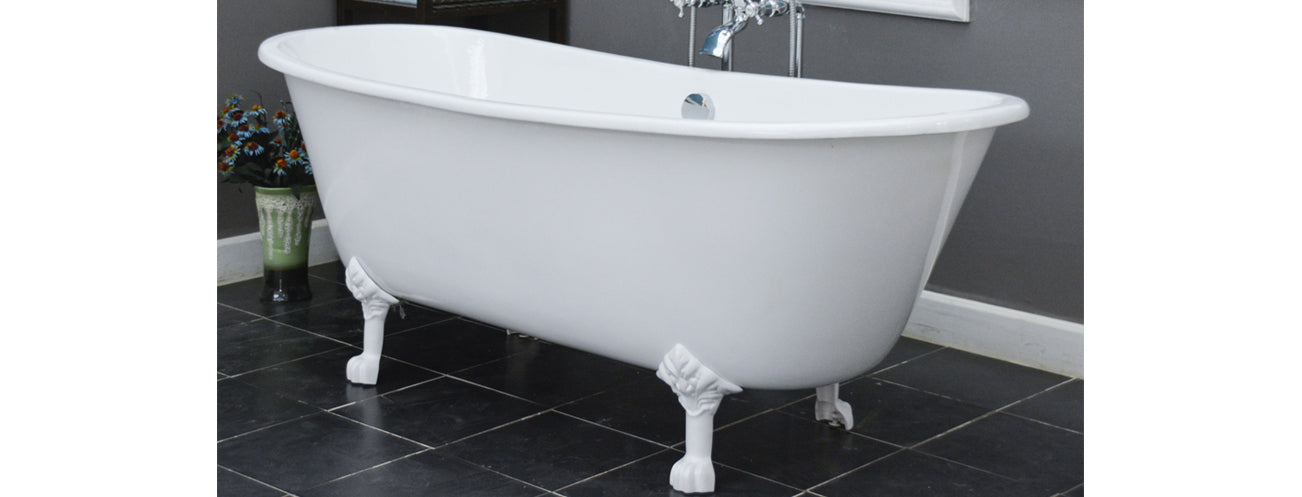Get PRO Pricing
Get [PRO] Pricing


Cast iron bathtubs are popular in the interior design world for their sturdy construction and heat-retaining properties. Contemporary trends also call for this durable material to be used widely in clawfoot bathtubs. While the first models of cast iron tubs were sourced from mined iron ore, today’s units are made in a more eco-friendly way.
According to “How It’s Made” a Science Channel program, cast iron is now made from scrap metal. Old water pipes, car parts, manhole covers and heating radiators are used to create these coveted tubs. While it’s a sustainable way to source materials, it’s also more cost-effective for manufacturers.
From start to finish, here is how the cast iron tub that makes its way into a vintage style bathroom is made:
Iron ore
The entire process begins with iron ore, which Kingston Brass sources from Australia. It’s obtained from the ground through open-cut mining. This describes a surface mining procedure, which is simpler than other methods and more cost effective.
Electric induction furnace
Once the iron ore enters the factory, it’s melted in an electric induction furnace that reaches temperatures of over 1,400 degrees Celsius. When ready, the result is a pool of liquid iron. The furnace is always kept on and 2/3 full to allow new batches to melt easier. A hydraulic cylinder pours the vat into a ladle. A trolley then moves the ladle overhead to a holding furnace, which will maintain the temperature.
Cast mold
The cast for the bathtub is made in two parts that have similar assembly processes. Moist sand and clay is placed into a steel pattern, and a hydraulic ramp packs the mixture down firmly. Clay is the bonding agent that holds everything together. Blades run over the top of the unit to brush off the extra sand and clay. Then, a machine lifts the mold from the pattern. That half of the mold is placed on its other portion, which was prepared earlier, leaving a small gap separating the two.
Next, the molten iron flows into the gap through a strategically placed opening and the tub travels to a cooling line. It’s left to set for 20 minutes where it hardens and solidifies. Afterward, it’s broken out of the mold and a robotic arm stacks it with previously prepared tubs.
Finishing touches
When the bathtub is ready for the next step, a worker sprays a layer of glass powder on the surface of the tub to act as an undercoating for the future enamel coat. To melt the glass, the entire tub is baked until it takes on a blazing red appearance. Afterward, another coating of the powder is added and it melts automatically, since the tub is still hot. The step is repeated once more to add an even stronger enamel bond. To finish off the bathtub, claw feet or other decorative touches might be added.
